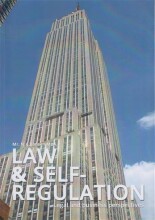Summary: Digital Marketing A Practical Approach | 9781351707640 | Alan Charlesworth
- This + 400k other summaries
- A unique study and practice tool
- Never study anything twice again
- Get the grades you hope for
- 100% sure, 100% understanding
Read the summary and the most important questions on Digital Marketing A Practical Approach | 9781351707640 | Alan Charlesworth
-
1 The digital environment
-
1.2 Digital transformation
This is a preview. There are 5 more flashcards available for chapter 1.2
Show more cards here -
How did Fitzgerald et al. (2013) define digital transformation?
Itencom passes the use of new digital technologies to enable major businessimprovements (such asenhancing customer experience,streamlining operations or creating new business models) -
How did Gerry McGovern define digital transformation?
Digital transformation is about organizing around the current customer. It is about putting the customer at the centre of the universe. Digital is the transformation agent, not the transformation. -
For any organization to digitally transform, for which 5 factors does transformation hold?
1. Be organization wide
2. Be understood by everyone in the organization
3. Involve everyone in the organization
4. Be cultural and not forced
5. Have no end date -
What are the 5 key components of the digital transformation?
Big data, Reverse marketing, mobile applications, the Internet of things and the automation of business processes. -
What is customer experience?
the sum of all the experiences a customer has with a business -
Which 4 things is big data good for?
- help improve customer service levels
- enhance customer
retention - improve overall customer lifetime value
- be used to deliver
personalized services
- help improve customer service levels
-
Which three issues raise to big data's value?
- with other aspects of technology, those promoting the concept – and term – are more often those who will gain from its adoption; that is, those selling products or services associated with it
- Mathematical algorithms produce data in abundance on what has happened – or is happening – but they have difficulty answering the question of why things are hap- pening. That is where the analytics come into play
- Should we first learn to maximize value from smaller data before going big?
- with other aspects of technology, those promoting the concept – and term – are more often those who will gain from its adoption; that is, those selling products or services associated with it
-
What is reverse marketing and what has social media to do with this?
Organizations andbrands areincreasingly distrusted by customers and so the customer has become themarketer , that is, the roles arereversed . Social media has had the most significant impact on the customer’sperception of the organization, brand or product. On social media, customers tell their friends (and the rest of the world) what they think about organizations,brands or products. And because they no longer trust marketing messages, customers trust other customers more -
What has mobile applications to do with the digital transformation?
By the raise of the mobile devices, phones are now the most used search engines. Customers are now always connected. 'Technology doesn't cause our behaviours to change, it enables our behaviours to change.' -
Give three examples of the internet of things.
Internet-connected fridges that order milk via a shopping app when you are running low.
Wearable devices that are used to monitor health, wellness or athletic performance.
Oral-B toothbrush that connects with your smart phone in order to track which teeth are being brushed
- Higher grades + faster learning
- Never study anything twice
- 100% sure, 100% understanding
































